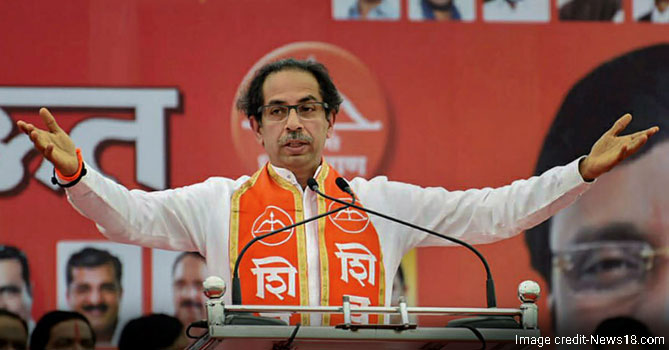The political battle in Jammu and Kashmir, following the recently-held, five-phase Assembly elections in December, has become even fiercer in the light of the continuing deadlock over the formation of a new Government and the subsequent imposition of Governor’s rule. After caretaker Chief Minister Omar Abdullah had expressed his desire to step down from the office on January 7, and as it became clear that no party or coalition would stake claim for forming a new Government, Governor NN Vohra had sought the President’s consent to proclaim Governor’s rule under Section 92 of the Jammu and Kashmir State Constitution on January 9.
Although the voter turnout in the valley was very impressive with 76% of the voters exercising their franchise, it nonetheless threw up a fractured verdict, which resulted in a hung Assembly. The age-old key players in the Kashmir Valley, which are the Peoples Democratic Party (PDP) and the National Conference (NC), met its most surprising and worthy opponent, the BJP, which recorded a historic success in J&K for the first time ever. With the PDP getting 28 seats, BJP 25 seats and the NC a mere 15 seats, none touched the magic number in a House of 87 seats.
BJP’s meteoric rise in Muslim-majority J-K
As is sufficiently clear, the BJP, continuing to the ride on the victorious Modi wave, is a fairly new entrant in the game in Kashmir. From winning 11 seats in the J&K Assembly elections in 2008 to 25 in the last elections, BJP’s rise in the valley is surprising indeed. The BJP’s emergence in a State which comprises majority Muslim voters is all the more congratulatory, Modi and his men having shed the communal badge.
The Indian National Congress, since the massive anti-incumbency wave against them in the general elections last year, has kept a particularly low profile in the State. It was clear to the Congress that it would have nothing to lose. Therefore, soon after the Election Commission announced the polling dates in the State, the INC officially declared coming out of the alliance with the National Conference, and fielding contestants for all the 87 seats. Now, winning just 12 seats has made the situation embarrassing for the Congress.
The more serious political players in the valley really are the PDP and the NC, the arch rivals from as early as their formations. Mehbooba Mufti-led PDP, cashing in on the bad administration of the previous NC Government, has won the most number of seats in the Assembly. One of the crucial factors has been the rising unemployment under the Omar Abdullah regime of the National Conference-led Government, which had escalated people’s anger and resentment against them. The PDP took clear advantage of this resentment in the State and emerged as the biggest winner. The Omar Abdullah-led NC, on the other hand, has increasingly remained unpopular with the masses in the State, due to its unpopularity. Its alliance with the Congress in the Government also worked against its chances.
All attempts to form coalitions fail
One must also remember that the 2014 Assembly elections had gained further importance in the background of the sensitive issue of the hanging of Afzal Guru, which was carried out during the Congress rule at the Centre. This singular incident polarised the people sharply against not only the Centre, but also some regional political parties, over the execution.
Given the history and legacy of political confrontations in the curious case of J&K’s Government formation, what were, are and could be the possible twists and turns in the State, in the light of the fractured verdict giving rise to a hung Assembly. The last two weeks were particularly amusing in the political game-making in the valley, as no single party had the majority and the attempts to put together a coalition failed. Political permutations and combinations remained unsuccessful in solving the most crucial riddle: whether it was PDP-BJP, PDP-NC or BJP-NC alliance that would stake claim in forming the new Government.
While BJP president Amit Shah claimed that informal talks with both the NC and the PDP were underway, both the regional parties and the national party refused to budge from their respective positions on critical issues like repealing of AFSPA, revoking Article 370 of the Indian Constitution and Delimitation and Chief Minister’s tenure. The larger issues of political ideology which catered to the sentiments of the people of J&K also made both the NC and the PDP not to join hands with the BJP.
Political instability intensifies
While arch rivals NC and PDP continued to blame each other for this present limbo, accusing each other of being an opportunistic and “power-hungry” party and one with individualistic aspirations, a major twist in the tale came when Omar Abdullah communicated to the Governor that the NC was ready to support the PDP in Government formation. While the PDP welcomed the NC’s offer, it firmly turned it down saying that the NC was trying to gain power “through the back door”, desperately trying to “convert their defeat into victory.”
Given the present scenario when Governor’s rule has been imposed, the singular question and concern that looms large is: What next? Clearly, given the bitter political struggles among parties in the State, the instability will only grow worse, if fresh elections are not held soon enough. But what is the guarantee that the scenario will not be repeated? As it is, J&K remains the forsaken land which witnesses violence and bloodshed almost as an everyday affair. With the present political uncertainties, all we can anticipate is a period of massive hoodlumism in the name of politics.




